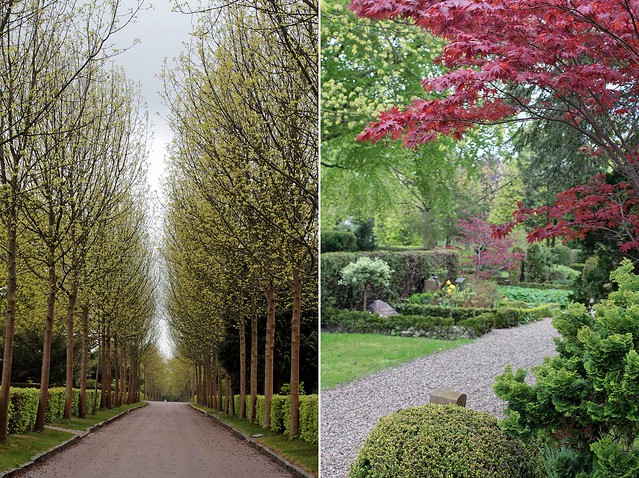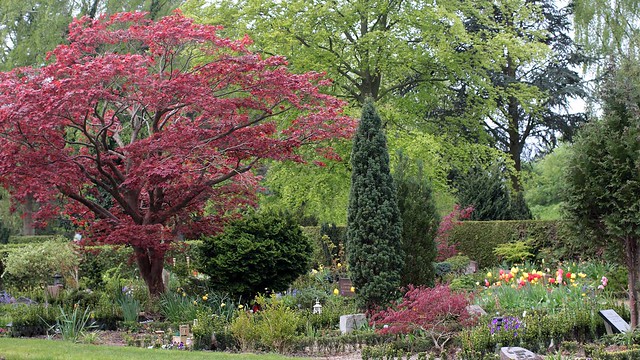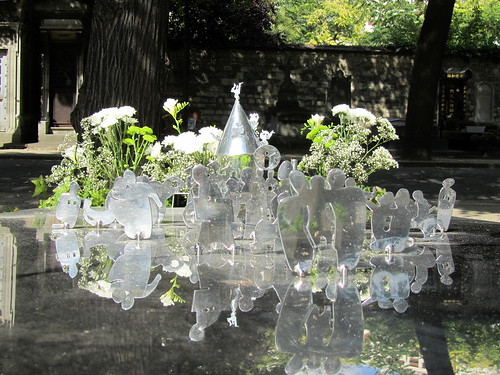I know this is going to sound morbid, but if it is at all possible, I wouldn’t mind calling the Assistens Kirkegård or Bispebjerg Kirkegård my afterlife home. If only you’ve seen how beautiful, well-tended, serene and calming these cemeteries are, you’d wish for such a fine final resting spot too. The famous – and over-crowded – Père Lachaise in Paris would be envious of its Danish cousins.


Continue reading »

I took a very long walk today – over 3 hours (in boots, not really advisable) – at Cimetière du Père-Lachaise. Surprisingly, despite all the trips in and out of Paris over the years, not to mention the months that I’ve been living here, I have never visited this cemetery before. I don’t know what took me so long either.
I wandered randomly without the help of a map, which actually made it slightly tricky, given the vast size of the cemetery. I barely covered about 1/3 of the grounds. Relying on “look where the crowd goes” strategy, that was how I spotted a few famous graves here and there. Not only that, there are also a number of memorial monuments, including this one above, in commemoration of Holocaust victims of Sachsenhausen-Oranienburg.
The cemetery itself is historical, beautiful and calm for most part. A place I should revisit so I can continue my exploration…

Culturally, I’ve been taught that cemetery is one place you don’t go to unless (1) it’s part of funeral/burial ritual, (2) it’s a designated prayer day, and (3) it’s dictated as part of specific ceremony. My grandma would be horrified to know that I’m visiting one as if it’s a place of attraction. However, in Paris, that’s what some of them are considered. You could even get a map that marks out the graves of the “stars” of the cemetery.
Perhaps there’s an energy of morbidity around. With Hungry Ghost Festival taking place soon, and having just visited an exhibition on Voodooism at Fondation Cartier, it seems natural to take a walk at Cimetière du Montparnasse nearby. Truly, it’s a very well-kept compound, with a sense of calm and zen. It is also fascinating, given it’s a multi-denominational cemetery, with interesting and varied monuments setting one grave aside from another. Just look at the one above. It could have easily passed for an art display anywhere, if you discount the other graves that you could see in the background.

Because I could not stop for Death —
He kindly stopped for me —
The Carriage held but just Ourselves —
And Immortality.
— Emily Dickinson
Time stole away. It was a little less than two years ago that I first stood in this cemetery, saying a final goodbye to D who was near and dear to me. All around us were intricate Celtic crosses and guardian angels, lending an air of ancient culture meet religious symbolism, yet on a closer look, modern marble headstones are found peppered around the site, proof of style transition of death monuments over time.
Personal association aside, Glasnevin Cemetery is managed by Glasnevin Trust, which functions include operating the Glasnevin Museum and in winter months, it even runs daily walking tour. The cemetery is the largest non-denominational cemetery in Ireland, and the graves of many prominent figures can be found here. I guess that makes Glasnevin Cemetery the Père Lachaise of Dublin?

















